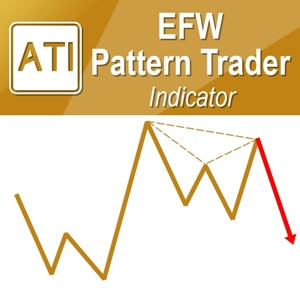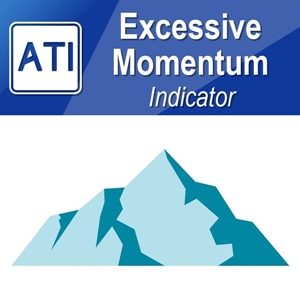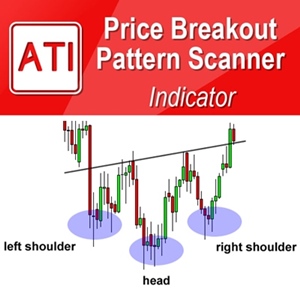Supply and Demand Zone with Harmonic Pattern
Supply and Demand Zone are the important concept for technical analysis that can be combined with various Harmonic Patterns. For exampel, Supply and Demand zone can be effectively combined with Harmonic Pattern Indicator to improve your trading performance. Let us cover some basics for the supply and demand zone first. Supply and demand analysis is known as several different names in the trading community like the supply demand analysis, demand supply analysis, supply demand zone trading, demand supply zone trading, and so on. In fact, all these various names are referring to the same trading strategy. We will use the name “supply and demand analysis” throughout this book. In essence, supply and demand analysis is one form of price pattern trading. The trading idea comes from understanding the supply and demand curve often appears in the Economic textbook. In fact, the supply demand analysis in trading involves to identify the price movement, which are caused by the unbalance in supply and demand. The practice does not require any math skills. However, it is more on the pattern recognition exercise with the chart.
Supply and demand zones are concepts used in technical analysis to identify areas on a price chart where there is a significant concentration of buyers (demand) or sellers (supply). These zones represent areas where the imbalance between supply and demand could potentially lead to significant price movements. Harmonic patterns, on the other hand, are a specific type of price pattern that traders use to identify potential trend reversals or continuations in the market.
When combining the concepts of supply and demand zones with harmonic patterns, traders often look for confluence or alignment between the two to increase the probability of successful trades.
Here’s how supply and demand zones and harmonic patterns relate:
- Supply Zone: This is an area on the chart where there is a concentration of sellers, causing price to potentially reverse or stall as supply exceeds demand.
- Demand Zone: This is an area on the chart where there is a concentration of buyers, causing price to potentially reverse or stall as demand exceeds supply.
- Traders identify these zones based on price action, looking for areas where price has previously reacted strongly, such as significant rallies or declines.
- Harmonic patterns are specific price formations that are derived from Fibonacci retracement and extension levels. They include patterns such as the Gartley pattern, Butterfly pattern, Crab pattern, etc.
- These patterns consist of a series of price swings and retracements that form specific geometric shapes on the chart.
- Traders use harmonic patterns to anticipate potential turning points in the market, with the expectation that price will reverse or continue its current trend.
When combining these two concepts, traders may look for instances where a harmonic pattern completes or coincides with a supply or demand zone. For example:
- A Gartley pattern may complete at a demand zone, suggesting a potential bullish reversal.
- A Butterfly pattern may complete at a supply zone, indicating a potential bearish reversal.
- Harmonic patterns forming within supply or demand zones may provide additional confirmation for potential trade setups.
Traders typically use other technical analysis tools and indicators to confirm their trading decisions when identifying these confluences. It’s important to remember that while these techniques can be useful, they are not foolproof, and traders should always manage their risk appropriately.
In terms of the technical analysis history, the supply and demand analysis shares some common characteristics with the volume spread analysis (VSA) devised by Richard Wyckoff in 1930s. In the volume spread analysis, Richard Wyckoff believed that the market shows the sideways move before making a strong bullish rise or bearish fall. Practically, the sideways market can be analysed by several different methods including the statistical method and pattern recognition method. He pointed that this sideways movement is the key area for our trading. He named this key areas as accumulation and distribution respectively for bullish and bearish trading. The key area consists of two prices forming a box zone. Similarly, the supply and demand analysis involves defining the key area to trade. In the practical trading, the supply and demand analysis involves identifying two key areas where supply is greater than demand (= supply zone) and where demand is greater than supply (=demand zone). Identifying the two key areas are done by looking at the price pattern. For example, supply zone is identified where the price drops at high speed from peak. Likewise, the demand zone is identified where the price rise at high speed from trough.
The structures of the harmonic pattern are based on the Fibonacci ratios. Hence, some people consider Harmonic pattern as an advanced Fibonacci price patterns. Harmonic patterns include Butterfly, Gartley, Bat, Alternate Bat, AB=CD, Shark, Crab, Deep Crab, Cypher, 5-0 Patterns, 3 Drives Pattern and so on. Harmonic Pattern Trading is not bullet proof but if it is used wisely, then it can yield enough edge to pull the profits from the market. Harmonic Pattern indicator refers to the automated tool to detect various Harmonic Pattern in your chart automatically.
Both Harmonic Pattern and Supply Demand Zone are based on the geometry of the market. Your ability to combine these geometry together with Harmonic Pattern Indicator can typically form the secret trading recipes for your successful career. Here is the list of Supply and Demand Zone Indicator that can go together with your harmonic pattern indicator.
In addition, you can also improve your supply demand zone trading with the turing point probability. In this article, we explain how to improve buy and sell prediction using the supply demand zone trading with the turning point probability.
https://algotrading-investment.com/2021/12/12/how-to-improve-supply-and-demand-analysis/
We introduce two supply demand zone indicator for MetaTrader 4 and MetaTrader 5. Mean Reversion supply demand is repainting but affordable indicator with tons of features. Ace Supply Demand Zone indicator is the powerful non repainting supply demand zone indicator.
Mean Reversion Supply Demand
Classic supply and demand zone indicator. This tools is the great to produce highly accurate supply and demand zone.
https://www.mql5.com/en/market/product/16823
https://www.mql5.com/en/market/product/16851
https://algotrading-investment.com/portfolio-item/mean-reversion-supply-demand/
Ace Supply Demand Zone
This is also great supply and demand zone tool extending the ability of Mean Reversion Supply Demand. What is even better? This is non repainting one. This is the great tool for different level of trader.
https://www.mql5.com/en/market/product/40076
https://www.mql5.com/en/market/product/40075
https://algotrading-investment.com/portfolio-item/ace-supply-demand-zone/
Related Products







